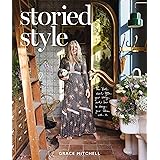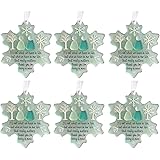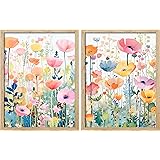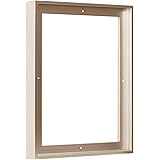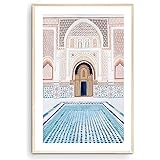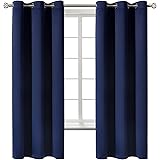The ephemeral nature of transient design trends often leaves homeowners in a state of aesthetic fatigue. A kitchen, as the heart of any home, demands an enduring character, a sanctuary immune to fleeting fads. This visual tour of a vintage English style kitchen, showcased in the accompanying video, presents a compelling antithesis to such impermanence. It offers a blueprint for creating a space that radiates calm beauty and timeless charm. Here, deliberate design choices coalesce, ensuring a kitchen that feels both rooted in heritage and refreshingly relevant.
Embracing the Vintage English Kitchen Aesthetic
The allure of a vintage English style kitchen is profound. It transcends mere decorative choices. This design ethos represents a commitment to longevity. Rather than chasing ephemeral trends, it anchors itself in tradition. The aesthetic value persists through decades. This creates a deeply satisfying living environment. Such kitchens are not simply functional spaces. They are cultural repositories, embodying generations of domesticity. Their design is a narrative of comfort and authenticity.
1. The Enduring Appeal of Timeless Kitchen Design
Vintage English kitchen design is celebrated for its inherent balance. It achieves a delicate equilibrium of simplicity and sophistication. Soft pastel tones, paired with authentic natural wood, create this unique harmony. This approach sidesteps the rapid obsolescence of trendy styles. Instead, it cultivates an aesthetic permanence. The resulting look is welcoming and exceptionally cozy. It remains practical for daily life. Yet, it retains visual stunning qualities for extended periods. This enduring quality marks true design excellence.
Consider the analogy of a bespoke suit. It is crafted with precision. Its classic lines never go out of style. Similarly, a vintage English kitchen represents a considered investment. Its elements are chosen for their intrinsic merit. The details speak of quality over novelty. This aesthetic decision yields dividends. The space never feels dated. Its character deepens with time. This fosters a unique sense of belonging.
2. The Orchestration of Pastel Palettes in Vintage Kitchens
Pastel colors introduce a distinct tranquility to any kitchen space. Shades like soft mint, delicate pale pink, and gentle powder blue are common. Creamy beige tones also play a pivotal role. They infuse the room with an undeniable warmth. These hues expertly reflect ambient light. This makes even compact kitchens feel expansive. In a vintage English kitchen, pastels are never overstated. They offer subtle elegance. This fosters an inviting and homely atmosphere. Their muted nature speaks volumes.
The selection of these specific hues is no accident. They evoke the gentle light of the English countryside. Think of a spring morning mist. These colors bring that softness indoors. They act as a canvas for other elements. They allow the natural wood to truly shine. Psychologically, pastels reduce visual stress. They promote a sense of calm. This makes the kitchen a truly restful space. It becomes an oasis of serenity.
3. The Foundational Role of Authentic Wood Elements
Natural wood elements form the very backbone of these kitchens. Oak, pine, or meticulously reclaimed timber are often utilized. They ground the entire design scheme. Their inherent warmth provides a vital counterpoint. This balances the soft, ethereal pastel tones. Wooden bespoke cabinets anchor the space. Rustic shelving displays curated collections. Farmhouse tables facilitate communal gatherings. This creates a perfect blend of tradition and practicality. It evokes the spirit of inherited family kitchens.
The choice of wood species is critical. Oak offers robustness and a distinctive grain. Pine provides a lighter, more rustic touch. Reclaimed timber brings a storied past. Each type tells its own material narrative. The finish applied to the wood is also paramount. A natural oil finish allows the wood to breathe. It develops a rich patina over time. Painted wood provides a crisp, clean look. Yet, the underlying grain often peeks through. This celebrates the wood’s inherent character. This biophilic design approach connects inhabitants to nature.
4. Bespoke Cabinetry with a Pastel-Washed Finish
Cabinetry painted in soft shades like mint or cream defines this aesthetic. These hues gently soften the visual weight of the space. They simultaneously highlight artisanal craftsmanship. The intricate details of wooden doors become apparent. The tactile quality of handles is emphasized. When coupled with natural wood countertops, the effect is striking. Open shelving further enhances this effect. This achieves harmony between beauty and essential functionality. Each cabinet becomes a quiet statement.
Specific door styles often feature prominently. In-frame cabinetry exemplifies traditional elegance. It ensures a high-quality, bespoke finish. Shaker-style doors offer clean lines. These provide a versatile backdrop for other elements. Beaded panels add a touch of intricate detail. The hardware choices are equally important. Aged brass handles develop a beautiful verdigris. Ceramic knobs introduce a delightful vintage touch. These seemingly small details contribute significantly. They elevate the overall design narrative. Integration with modern appliances requires thoughtful planning. Built-in solutions maintain the vintage facade.
5. Illuminating the Vintage English Kitchen with Soft Radiance
Lighting profoundly transforms any kitchen environment. It can elevate it into a truly cozy sanctuary. Warm, diffused lighting is essential. Vintage-style chandeliers become focal points. Rustic pendant lamps cast inviting glows. These fixtures highlight the pastel tones beautifully. They emphasize the richness of natural wood. Candlelight adds a romantic ambiance. Lantern-inspired fixtures are also highly effective. This creates an English countryside feel. Such lighting is perfect for seasonal evenings. It is ideal for intimate family gatherings. The atmosphere becomes incredibly personal.
Layered lighting schemes are highly effective. Ambient lighting provides general illumination. Task lighting illuminates work surfaces. Accent lighting highlights architectural features. Dimmer switches are invaluable. They allow control over intensity. The color temperature of light bulbs matters. Warm white (2700K-3000K) enhances coziness. It complements the pastel palette. This creates a soft, welcoming glow. Decorative sconces add character. Undercabinet lighting ensures practicality. Each light source contributes to the overall warmth. It prevents harsh shadows from forming.
6. Rustic Flooring: The Grounding Element of English Heritage
The choice of flooring is often underestimated. Yet, it plays a critical role in a vintage kitchen’s allure. Stone tiles provide a robust, traditional foundation. Distressed wooden planks evoke aged country homes. Checkerboard patterns offer a classic, charming visual. These choices establish a timeless base. They expertly balance the soft pastel tones above. They ground the entire space with durability. Their rustic elegance is undeniable. The overall design remains true to its English heritage. It feels authentically established.
Beyond aesthetics, durability is key. Kitchen floors endure heavy foot traffic. Limestone or flagstone tiles are incredibly resilient. They also age gracefully, developing a rich patina. Solid oak floorboards offer a warmth underfoot. They can be sanded and refinished multiple times. Engineered wood provides stability. It resists temperature and humidity changes. Terrazzo, with its composite nature, offers unique patterns. It also boasts exceptional longevity. Proper sealing protects against spills. This ensures the floor’s lasting beauty. The floor becomes an integral part of the narrative.
7. The Artful Integration of Vintage Decor Accents
Decor accents infuse personality into the pastel and natural wood kitchen. They are the curated details. Vintage glass jars become functional art. Floral china adds a touch of delicate beauty. Rustic woven baskets offer textural contrast. Antique copper pots gleam with a warm luster. These everyday items transform into decorative statements. They breathe life and history into the kitchen. This makes the space feel profoundly lived-in. It becomes a repository of nostalgic charm. It truly embodies warm English character.
The philosophy here is curation, not clutter. Each accent piece should tell a story. It should possess inherent character. Sourcing these items requires discernment. Flea markets often yield hidden treasures. Estate sales offer authentic period pieces. Replicas can also be thoughtfully integrated. They should possess a convincing patina. Displaying collections should follow certain principles. Grouping items by color or material creates cohesion. The ‘rule of three’ often applies to vignettes. It creates visual interest. Open shelving invites these displays. It transforms storage into an exhibition.
8. Seasonal Table Styling: A Dynamic Expression of Comfort
Styling the farmhouse table seasonally keeps the decor vibrant. It introduces a dynamic element. Linen table runners in soft pastel tones are elegant. Vintage dishes offer a sense of tradition. Rustic flower arrangements bring natural vibrancy. These choices refresh the kitchen’s aesthetic. Whether set for a leisurely breakfast or a formal occasion, the effect is charming. This seasonal home decor reflects timeless English traditions. It showcases personal creativity. Each season brings a new opportunity.
The selection of textiles is crucial. Pure linen offers a relaxed elegance. Wool throws add warmth in colder months. These natural fibers drape beautifully. Tableware can range from antique transferware to simple stoneware. Both evoke a sense of heritage. Botanicals are essential for seasonal styling. Spring brings daffodils and hyacinths. Summer features roses and lavender. Autumn offers gourds and chrysanthemums. Winter showcases evergreen boughs and berries. These living elements connect the interior to the exterior. They celebrate the rhythm of the year.
9. Open Pantry and Display Storage: Functionality as Form
Many vintage English kitchens feature a well-appointed pantry. Open storage systems are also common. Wicker baskets provide rustic texture. Glass jars beautifully showcase ingredients. Wooden shelves display culinary essentials. Food items are not merely hidden away. The storage itself becomes a decorative feature. It highlights natural textures. These elements blend seamlessly. They complement pastel tones and rustic wood. This creates an honest, working kitchen aesthetic. Everything has its place and purpose.
An open pantry demands meticulous organization. Baskets categorize items neatly. Labeling jars ensures easy identification. Wooden crates store root vegetables effectively. This system marries aesthetics with practicality. It celebrates the bounty of the kitchen. Ventilation is also a key consideration. A well-designed pantry ensures air circulation. This preserves foodstuffs effectively. It prevents stale odors from accumulating. The visibility of ingredients inspires creativity. It encourages thoughtful meal preparation. This approach transforms the mundane into something beautiful.
10. Cultivating a Cozy Tea Corner: The Quintessence of English Hospitality
The ritual of tea is central to English culture. A dedicated tea station is therefore essential. It belongs in every vintage English kitchen. A charming wooden sideboard often hosts this area. Alternatively, a small shelf suffices. Teapots, pastel cups, and a kettle become focal points. This corner radiates warmth and invitation. It adds both aesthetic charm and practical function. It celebrates the time-honored tradition. It symbolizes English hospitality at its finest. This small area embodies great significance.
The choice of teaware is an expression of taste. Delicate bone china adds refinement. Robust stoneware offers rustic appeal. The kettle itself can be a design statement. A traditional stovetop kettle whistles charmingly. Modern electric kettles offer convenience. A selection of artisanal teas can be displayed. Small biscuit tins add a nostalgic touch. This corner is a place of pause. It invites moments of quiet contemplation. It fosters connection and conversation. It is a microcosm of the entire kitchen’s ethos.
11. Infusing the Ambiance with Cozy Seasonal Scents
Scent completes the sensory immersion within a kitchen. It enhances the entire experience. Freshly baked bread evokes winter comfort. The scent of lavender recalls summer meadows. Spiced candles define autumn evenings. These olfactory nuances enrich the English kitchen design. They create an environment that feels lived-in. It feels deeply comforting and incredibly warm. These subtle shifts mark the passage of seasons. They make the kitchen truly unforgettable.
Olfactory design is a powerful tool. It shapes emotional responses. Natural scents are always preferred. Avoid synthetic fragrances where possible. Simmer pots with citrus and cinnamon are effective. Fresh herbs growing on a windowsill release delicate aromas. Essential oil diffusers offer controlled fragrance. Choose oils like bergamot or chamomile for calm. Vanilla or clove enhance coziness. The kitchen becomes a multi-sensory experience. It engages all senses harmoniously. This subtle layer perfects the vintage English style kitchen.


